Serve New Audience with New Methods: “Listen to” the Museum in Another Way
日期:07-29-2019来源:World Expo Museum 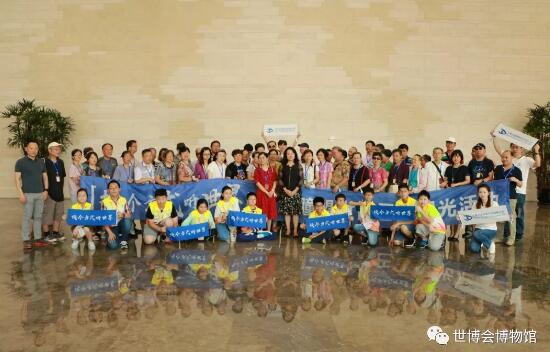
On July 23, co-organized by Shanghai Association of the Blind, the World Expo Museum, Shanghai New Height Travelling and the “Listen to the New World” volunteer group, the Bus Sightseeing to WEM invited nearly 60 people with visual disability with the purpose of satisfying their mental needs.
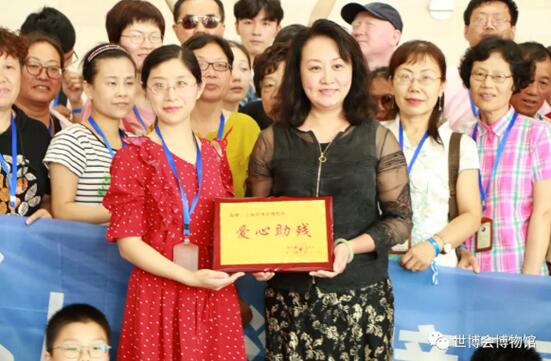
The plate awarding ceremony
At the activity site, Shanghai Pudong New Area Association of the Blind honored Shanghai New Height Travelling (Shanghai Sightseeing), WEM and the Listen to the New World” volunteer group with the title of “help the disabled with love”.
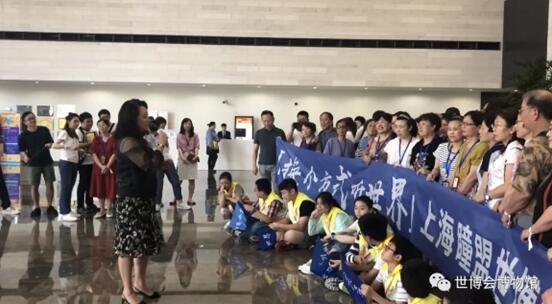
WEM director Liu Xiuhua delivering the welcoming speech
WEM director Liu Xiuhua extended her warmest welcome to the visitors. She mentioned that at the 1893 Chicago World Expo, Helen Keller, who was then a 13-year-old blind girl, learnt about the telephone invented by Doctor Bell. The visitors can know more about this by visiting the WEM exhibition halls, through which they will be able to experience their special relations to the World Expo.
Director Liu Xiuhua introduced the non-inductive experiential guiding mini program,“smart WEM” in particular, which was a barrier-free optimized software specially developed for people with visual disability. WEM is also the first museum in Shanghai to provide smart guidance combined with smart barrier-free services in all its permanent exhibition halls.

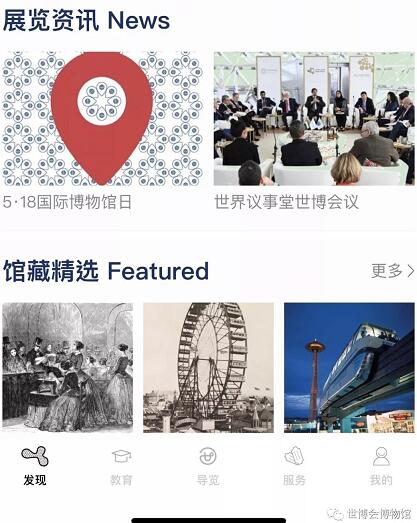
The “Smart WEM” mini program
“Listen to” the museum

People with visual disability wearing earphones
For people with visual disability, it may be difficult for them to visit a museum. However, here at WEM, different methods can be applied to help them “listen to” the museum.
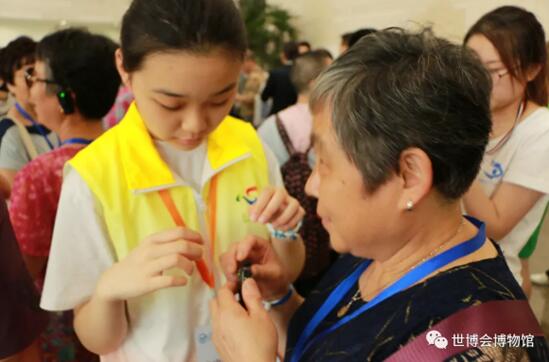
Volunteers giving one-to-one guidance
WEM volunteers and volunteers from the group helped those with visual disability wear the guiding earphones and asked them to be careful.
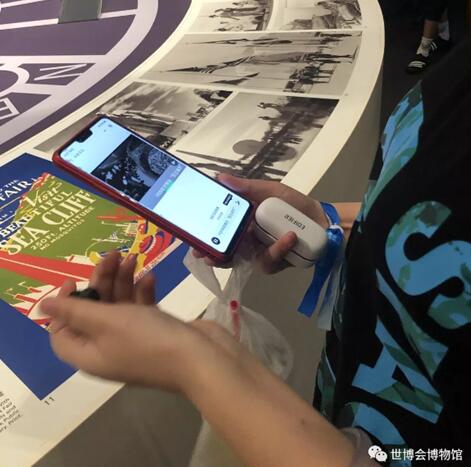
Visitors using the mini program
Apart from listening to the introduction to the exhibits, people with visual disability can also use the “visual assistant guidance mode” in “smart WEM”. In this mode, the mini program will immediately play the corresponding audio introduction once the user comes close to a certain exhibit.“Smart WEM” fits the blinds’ using habit in its design, and was very popular among them.
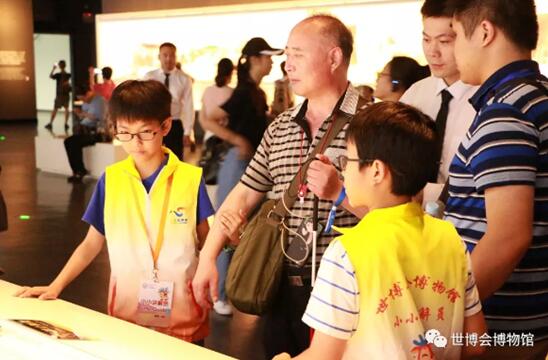
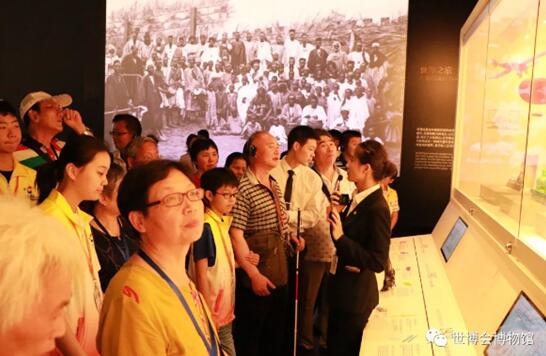
Visiting permanent exhibitions
Through this visit, those people with visual disability learnt a lot about the World Expo history and development, as well as experienced diverse cultures from all over the world.
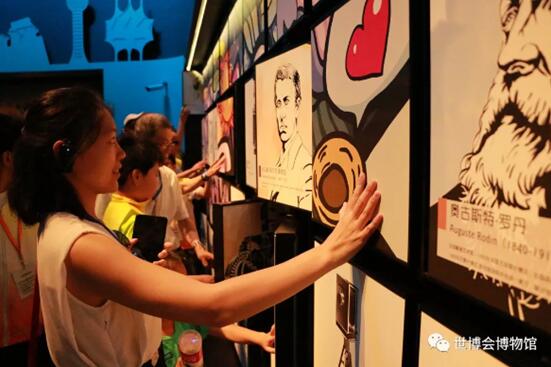
Visiting permanent exhibitions
The activity was celebrated, and according to the visitors, it brought them different experiences, made their spare time more colorful and helped them know more about Shanghai.

Taking the sightseeing bus
During the activity, the people with visual disability were able to take the sightseeing bus with guiding earphones. The bus passed through Yu Garden, the Bund, Lujiazui, the Oriental Pearl TV Tower, Shanghai Ocean Aquarium, Shanghai Tower and Shanghai World Financial Center, and each visitor was able to feel Shanghai’s history of more than 100 years and its new development in the new era.
According to the statistics released by China Disabled Persons’ Federation, there were altogether 12.63 million people with visual disability by 2010. As time passes on, the number keeps increasing. That is to say, one in 100 persons suffers from visual disability. However, why do we seldom meet them in museums in spite of the large number of people with visual disability?
If we take a general view of the modern society, we can see that it is after all based on vision.“Eyes” are recognized as the organ for learning about the world, and “seeing” is the main way to get information (quoted from hongbowang.net). As a cultural institution that “serves the society and its development”, a museum should take the education responsibility to every social member. Apart from the single traditional way of visual displaying, other ways of “visiting the museum” should be developed as well so that people with visual disability can also enjoy the cultural service provided by museums to the society.
“Listen to” the Museum in Another Way makes the life of people with visual disability more colorful, and provides them with a new platform to appreciate the world. Meanwhile, it helps to contact with more professional institutions that dedicates to helping the blind so that everybody can work together to care for people with visual disability.